Strange how 2016 seemed to fly by even faster than the previous year … maybe having our own vineyard is the difference, since we’re now spending so many hours among the vines. We hope you had a wonderful holiday season and have great adventures planned for 2017.
New x 2 for the New Year
We just realized that our theme for the start of this year is “things in pairs.”
First, we’ll be releasing two dry Gewürztraminers and two dry Rosés of Pinot Noir this spring! We’ll tell you all about it as we get closer to the spring release.
Second, we’re happy to announce that we’ve launched a pair of new gift programs. You can now give the gift of a Cartograph Circle membership, which provides your recipient with two wine club shipments (one year’s worth); the Cartograph Circle discount on wine they purchase all year long; and complimentary tastings and invitations to our release parties.
We’re also introducing Cartograph gift cards. If you’d prefer a different dollar amount, email Serena and she’ll create one for the amount you’d like. When you buy a gift card, we’ll email you a PDF that you can email or print to give to your recipient.
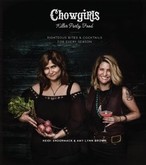 On a slightly different “pairing” note: Our recipe pairings for the spring and fall releases are all coming from Chowgirls Killer Party Food, the best-selling cookbook written by good friends of ours from Minnesota. Chowgirls has been catering Cartograph’s Minnesota spring release parties since our debut, and chef Heidi Andermack has been friends with Alan since his days at Minnesota Public Radio.
On a slightly different “pairing” note: Our recipe pairings for the spring and fall releases are all coming from Chowgirls Killer Party Food, the best-selling cookbook written by good friends of ours from Minnesota. Chowgirls has been catering Cartograph’s Minnesota spring release parties since our debut, and chef Heidi Andermack has been friends with Alan since his days at Minnesota Public Radio.
We’re looking forward to sharing these recipes with you — and we’re also working with the book’s distributor to make it available at a special price in the tasting room.
notes from the cellar
2014 Greenwood Ridge Riesling, Mendocino Ridge
Have you ever had a moment when you look at a bottle that’s several years old and you wonder: Should I drink it now, or should I wait? In each newsletter from now on, we’ll dip into the cellar, taste a wine and let you know what we think the window is for drinking it.
Here's what we found when we opened the 2014 Greenwood Ridge Riesling from Mendocino Ridge: On the nose you get violets, orange blossom and a hint of petrol/diesel. That might sound odd if you’re new to dry Riesling, but this is a characteristic often present in the great Rieslings from Germany and Alsace, and is prized by Riesling geeks all over the world. On the palate, there are flavors of lemon and almond as well as floral notes that blossom as the wine warms in your mouth. It’s bright and vibrant, with a long finish that turns decidedly nutty late on the finish.
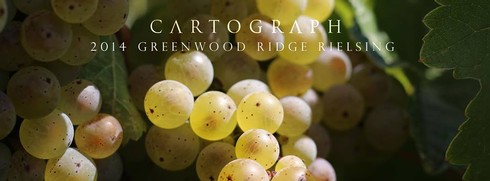
This is a wine you can enjoy right now — or you can give it a couple more years to age, which will bring out more of the petrol quality.
If you are opening up this wine now and curious what to pair with it, here is the link to the recipes we have enjoyed with the Riesling.
We so enjoyed revisiting this wine that we’ve added it to this month’s tasting menu. If you’re in town, stop by for a taste so you can decide whether you want to open your bottles or restock your supply.
Get 'em before they're gone
 We have a few cases left of the 2013 Floodgate Vineyard Gewürztraminer — definitely a wine to drink now. Aromas of honeysuckle, white peach and orange zest rise from the glass. On the palate, you'll get citrus with a lush and silky mouthfeel. The finish has a very slight phenolic edge, which makes a long finish and creates a perfect pairing not only with traditional Asian dishes, but also with holiday meals (think Thanksgiving turkey) and dishes like seafood ceviche that can match its citrus zing. Get it now.
We have a few cases left of the 2013 Floodgate Vineyard Gewürztraminer — definitely a wine to drink now. Aromas of honeysuckle, white peach and orange zest rise from the glass. On the palate, you'll get citrus with a lush and silky mouthfeel. The finish has a very slight phenolic edge, which makes a long finish and creates a perfect pairing not only with traditional Asian dishes, but also with holiday meals (think Thanksgiving turkey) and dishes like seafood ceviche that can match its citrus zing. Get it now.
Last spring we released the 2015 Starscape Vineyard Gewürztraminer and we have 10 bottles left! You'll definitely smell the classic honeysuckle and orange blossom you'd expect from a fine Gewürztraminer — but you’ll also get a couple of surprises, like beeswax and a hint of something almost creamy. On the palate, this year’s Gewürz is a little more lush at this age than past vintages, but it’s a classic example of why we love Starscape: It performs a great balancing act by being bright and lively while still being soft and supple. Citrus and floral notes linger on the finish. Get one of the last ten bottles here or email Serena to hold a bottle for you.
FROM THE WINEMAKER
Secrets of Soil
I kept this column short last month, knowing that this month I was going to geek out on soil. When we bought our first vineyard last year, we opened up a whole new arena of questions we have to answer to run a successful business. One of the biggest things to understand about any vineyard is what’s happening beneath the soil surface. I don’t pretend to be an expert in soil science, but did learn a lot from our soil consultant, Daniel Roberts, and vineyard manager, Scott Knippelmeir, in the process of doing this analysis.
You can make educated guesses about what’s going on below ground in a vineyard by observing canopy health, cane vigor, crop load and berry size, along with many other variables like how the vineyard responds to irrigation. Over time, you can come up with irrigation schedules, cover crop choices and other cultural practices to get the best possible crop — but this approach takes time and can lead to costly mistakes. While it might not be in vogue in Washington right now, in the vineyard there’s a definite answer to the question of how we can know for sure what's going on with the soil:
SCIENCE!
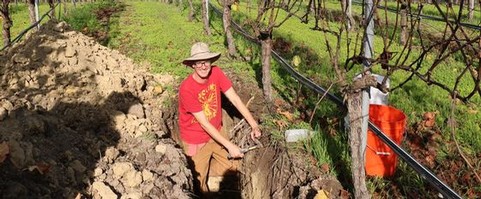
You can dig a bunch of pits, inspect the vines’ root structure and the soil, and run tests on soil samples to determine its composition and the distribution of nutrients and minerals. As you can see in the photo, a backhoe digs down about five feet and then digs steps into one side of the pit so you can walk down into it. You might think that this would damage the vines since you’re digging right through the root zone, but they barely take a hit. Now you can see exactly how deep the roots go. Are there healthy feeder roots? How plentiful are the small hair-like roots that absorb the majority of water and nutrients?
Scanning the horizons
A real eye-opener for me was that the soil doesn't transition slowly from topsoil to bedrock, but rather has a highly defined structure that changes composition at specific depths. When you’re doing your analysis, you split these layers into "horizons” — the thickness of each horizon and where they transition varies throughout the vineyard. There are more complicated ways to analyze the soil horizons, but for our purposes we split them into three:
A: Surface soil, where you have most of your organic matter and biological activity.
B: Subsoil, which often gathers clay and soluble minerals that have washed out of the surface soil.
C: Substratum, a layer that’s like the parent rock for the soil. In all our pits, this was decomposing sandstone.
For example, Pit 12 had three horizons:
0-10" sandy loam, brown, friable, loose
10-30" fine sandy loam, yellow brown, friable, loose
>30" clay loam, yellow brown, blocky, hard
And Pit 14 had two horizons:
0-24" fine sandy loam, brown, friable, loose
>24" sandy clay, grey, blocky hard
The entire vineyard is planted in Goldridge sandy loam, which has a gray- to brownish-gray appearance. It’s an ideal vineyard soil for two key reasons. First, it’s typically fairly benign when it comes to minerals that can be toxic to vines at high concentrations. It’s also extremely well drained, which puts us in charge of how much water a vine gets in the critical stages of growth. A key challenge is managing the amount of organic matter in the soil, since there is very little that’s naturally there.
The photos below show the top three horizons as well as some of the sandstone that is the parent rock. Photo 1 is horizon A, topsoil that’s darker due to a higher amount of organic matter in the soil from composted leaves, canes and cover crop.
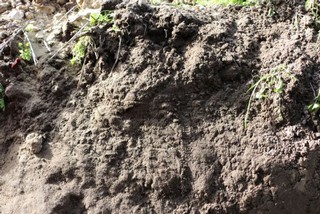
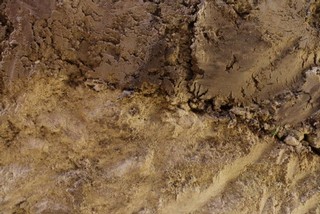
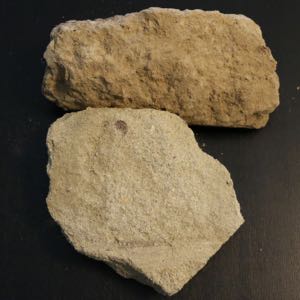
Above is the transition from horizon B to horizon C. Horizon B in this pit was higher in clay content, and the obvious shift to horizon C shows more uniform decomposing sandstone. Digging through this typically deep layer of decomposing sandstone, you eventually reach solid stone that comes out of the pits in big chunks.
We mapped this data across the vineyards and it became clear that the areas of the vineyard where we've seen weaker vines match up with conditions that might make root penetration difficult. In areas with high vigor, pits generally showed deep roots, sometimes well over 36 inches deep. In the areas where we saw thinner canopy and less ability to weather water deficits, we saw some roots that go no further down than 10 inches.
You can imagine the difference in drought tolerance when the vines have such disparate root volumes. In the spots where the roots stopped around 12 inches down, they ran into either hard-packed soil or a substantial layer of clay that shunted root growth out horizontally. While you might suspect that all shallow-rooted vines would behave the same, they actually don’t. Vines in the higher-clay areas still had access to moisture thanks to the water-retaining properties of the clay — so those vines have plenty of access to water and behave more like the vines that have deeper roots.
Now the we have the soil mapped, we can overlay that data with images showing canopy vigor and can use both to make decisions about how to manage different sections of the vineyard. Our findings also inform our thinking about when we might start a replant program and where we would start replacing vines. The good news is that we don’t need to pursue a replant permit aggressively; we’re in good enough shape that we can manage most of our issues with careful irrigation and pruning in selected areas to balance out vigor across the vineyard.
What's in that dirt?
The physical aspects of the above discussion are a lot more straightforward than the complex web of relationships among various minerals in the soil and how they help vines take up nutrients and ward off disease. Soil analysis is very helpful when it comes to choosing cover crops and figuring out what, if any, soil amendments we might need to make during the growing season. The good news: Things are fairly well balanced; with a good mow-down cover crop in the vineyard this winter, we'll have very few things that we'll need to do in the spring.
We did find that there’s a crazy high amount of calcium in the soil, likely due to an over-application of gypsum when the vineyard was prepared for planting. This isn't something that’s problematic for the grapes, which is a good thing because there isn't much that can be done about it. Otherwise, the minerals are in balance and we can monitor and adjust by analyzing plant tissue a couple of times a year.
With this work behind us and the final reports in hand, we can move on to creating a strategy for pruning the vineyard and modifying our trellis system to accommodate areas where we might carry more or less crop to balance out vigorous areas. It’s been quite cold and rainy this winter, so it is unlikely we'll be fretting over super-early budbreak again this year. And the rain keeps falling …
Cheers,
Alan
UPCOMING EVENTS
Feb. 25: International Alsace Varietals Festival, Booneville, CA
March 18: Winemaker Tasting: Starscape Vineyard Vertical
April 27: Cartograph-Valette Meet the Makers Dinner
May 7 and 20: Cartograph Circle Spring Release Party
BACK TO WORK WE GO
Thank you all for helping us have a great 2016! Here's a toast for 2017 to bring more wonderful experiences to us all. It’s time to put our boots back on and go check on how the vineyard is faring with all this rain.
Cheers,
Alan and Serena
